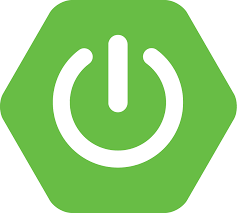Java Full Stack development is like a superhero of the tech world - a developer who can handle all aspects of
developing and designing software. It includes:
What is a Java Full Stack development course and why should you take one?
A Java Full Stack development course is like a treasure trove of knowledge that covers every aspect of web
development. It's a comprehensive journey that takes you from front-end design and development to back-end
programming and databases.
You'll learn how to work with a variety of languages and frameworks,
including HTML, CSS, JavaScript, and popular backend frameworks like Django, Ruby on Rails, and Node.js. The
best part is that you'll get to apply what you learn through practical projects, giving you real-world
experience and the confidence to tackle any development challenge. And let's be real - being a Java Full Stack
developer is like having a superpower in today's tech-driven world, so why not join the ranks of the tech
elite with a Java Full Stack development course!
Why should you choose simplilearnbay Java Full Stack development course?
Our program is designed to meet the needs of busy professionals and students alike. simplilearnbay Java Full Stack
development course in Lakshmi Nagar , Delhi , Delhi is the crème de la crème for several reasons:
- Expert-led instruction: Learn from top-notch industry professionals who bring real-world experience to the
classroom.
- Hands-on approach: Get your hands dirty with practical projects and assignments that build real-world
skills.
- Flexibility: Take the course on your own schedule, with both online and in-person options available.
- Job-ready skills: Develop the skills and knowledge that are in high demand by employers in the tech
industry.
- Industry connections: Network with industry professionals and gain access to job opportunities and
internships.
All in all, simplilearnbay Java Full Stack development course for beginners in Lakshmi Nagar , Delhi , Delhi is like a master class in
web development, providing the tools and training you need to succeed in the tech industry
Perks of our out-standing Java Full Stack development course
Here are some of the sweet advantages of simplilearnbay Java Full Stack development course boot camp in Lakshmi Nagar , Delhi , Delhi:
- Comprehensive curriculum: You'll learn the ins and outs of Java Full Stack development, from front-end to
back-end and everything in between.
- Industry-recognized certification: Upon completion of the course, you'll earn a certification that is
highly valued by employers in the tech industry.
- Job-ready skills: The course is designed to equip you with the practical skills and knowledge that are
essential for success in the tech job market.
- Networking opportunities: You'll connect with other students and industry professionals, which can open up
doors to job opportunities and valuable connections
- Career support: simplilearnbay course doesn't end when you graduate - you'll have access to career services and
support to help you land your dream job.
What is the ideal course curriculum for Java Full Stack development course?
The ideal Java Full Stack development course syllabus in Laxmi Nagar should include the following:
- - HTML, CSS, and JavaScript for front-end development
- A back-end programming language, such as Python, Ruby, or Java.
- - Database management and SQL.
- Version control and collaboration tools like Git and GitHub.
- Version control and collaboration tools like Git and GitHub.
- Web application frameworks like Django, Ruby on Rails, or Node.js.
- Front-end frameworks like React, Angular, or Vue.js.
- - Server-side scripting and application deployment.
- API development and integration.
- Soft skills such as communication, problem-solving, and teamwork
Basically, the Java Full Stack development course curriculum in Laxmi Nagar, should cover everything you need to
become a well-rounded, versatile Java Full Stack developer.
Who is eligible for this Java Full Stack development course?
Most Java Full Stack development training courses in Laxmi Nagar are designed for anyone with a basic understanding
of programming and web development. Here are some typical eligibility criteria:
- - Basic computer skills, including proficiency in using operating systems and software applications
- Basic knowledge of programming concepts and a scripting language such as Python, JavaScript, or Ruby
- A strong desire to learn and work in a fast-paced, ever-evolving field.
- A willingness to work collaboratively and learn from others
- The ability to think logically and solve problems creatively
So, if you meet these basic requirements, you should be eligible for most Java Full Stack development courses. No
prior experience required!
What are the potential career benefits of earning a Java Full Stack development certification?
Here's the deal: Java Full Stack developers are highly sought after in the tech industry because they have a wide
range of skills that are essential for building and maintaining web applications. Here are some benefits of
taking a Java Full Stack development course in Lakshmi Nagar , Delhi , Delhi:
- Increased employability: Companies are always on the lookout for developers who can work on the front-end,
back-end, and database of an application
- Versatility: You'll be able to work on any aspect of a project, from design to deployment, making you a
valuable asset to any team
- Flexibility: Java Full Stack developers can easily transition between roles, such as front-end developer,
back-end developer, and database administrator
- Increased earning potential: Java Full Stack developers often command higher salaries than those with
specialized skills in just one area of development
Opportunities to get after completing the course?
Java Full Stack developers have a wide range of opportunities available to them, including:
- Front-end developer: building the visual and interactive elements of a website or application
- Back-end developer: building and maintaining the server-side of a website or application, including
databases, servers, and APIs
- Java Full Stack developer: working on all aspects of a project, from design to deployment.
- Database administrator: managing and maintaining databases for applications and websites.
- Web designer: creating the visual layout and design of a website or application.
- Web developer: responsible for the coding, testing, and deployment of websites and applications
- Product manager: responsible for overseeing the development and launch of new products and features.
Perks of getting a Java Full Stack development course
Here are some Java Full Stack development course benefits in Laxmi Nagar:
- Increased job opportunities: The demand for Java Full Stack developers is high and continues to grow, which
means more job opportunities for you.
-
Higher salaries: Java Full Stack developers are often in high demand and can command higher salaries than those
with specialized skills.
-
Career growth: Java Full Stack developers can progress to leadership positions, such as team leads, project
managers, or CTOs.
-
Flexibility: Java Full Stack developers can work in various industries, including healthcare, finance,
e-commerce, and more.
-
Creative freedom: Java Full Stack developers have the opportunity to work on a variety of projects, from small
startups to large enterprises, which allows them to be creative and innovative.
What core skills and projects will be focused upon in this Java Full Stack development course?
Here are some core skills and projects you can expect to tackle in a Java Full Stack development course:
- Front-end development: HTML, CSS, and JavaScript for creating the visual and interactive elements of a
website or application.
- Back-end development: Programming languages like Python, Ruby, or Node.js for building and maintaining the
server-side of a website or application
- Database management: SQL, NoSQL, and ORM for managing databases.
- APIs: RESTful APIs for enabling communication between applications
- Version control: Git for managing code changes and collaboration
- Project examples: E-commerce website, social media platform, CRM system, or online learning platform.
It's a smorgasbord of skills and projects that will make you a well-rounded developer.
How long this Java Full Stack development course will stretch?
The Java Full Stack development cost duration in Laxmi Nagar is 6-months, in which you can expect to cover the
basics of front-end and back-end development, including HTML, CSS, JavaScript, a programming language like
Python or Ruby, and database management with SQL. You'll also learn the fundamentals of version control with
Git, and gain experience working on small-scale projects. You'll leave with a solid foundation of Java Full Stack
development skills, but it's worth noting that it takes time and practice to become proficient in this field.
It's like building a muscle - the more you use it, the stronger it gets!
How much a Java Full Stack development course cost?
simplilearnbay Java Full Stack development course fee in Laxmi Nagar is only ₹40,000, in which you can learn from the
best in the industry. You get access to expert instructors, hands-on projects, and personalized support.
You'll learn everything from HTML and CSS to Python, Ruby, and SQL, all while building a portfolio of
impressive projects. Plus, you'll develop soft skills like problem-solving, communication, and teamwork, which
are critical in any field. It's like a one-stop shop for everything you need to succeed in the tech world, at
a fraction of the cost of other programs. Win-win, right?
Prediction of the future of Java Full Stack development industry
The future of Java Full Stack development is brighter than a supernova! With the increasing demand for digital
products and services, Java Full Stack developers will be in high demand. Here are a few trends to watch out for:
- The rise of low-code and no-code platforms that make development more accessible
- Greater emphasis on security and data privacy.
- The expansion of cloud computing, making it easier to scale applications and store data
- The growth of mobile development and the need for developers who can build apps for multiple platforms
- The increasing importance of user experience (UX) design, as users demand more intuitive and seamless
experiences
- The rise of progressive web apps (PWAs) that offer app-like experiences without the need for installation
- The continued growth of the Internet of Things (IoT) and the demand for developers who can build connected
devices and systems
- The rise of serverless architecture, allowing developers to build and deploy applications without managing
servers.
- Increased adoption of DevOps practices, which emphasize collaboration between developers and operations
teams
- The growth of voice-based interfaces like Amazon Alexa and Google Assistant, which require developers to
create voice-enabled applications
- The emergence of blockchain technology and the demand for developers who can build decentralized
applications
- The expansion of virtual and augmented reality (VR/AR) and the need for developers who can create
immersive experiences
- The rise of quantum computing and the need for developers who can build applications that leverage this
technology
- The growth of edge computing, which brings processing and storage closer to the source of data, improving
latency and efficiency.
- The expansion of 5G networks, which will enable faster and more reliable connectivity for devices and
applications
Java Full Stack developers will be at the forefront of these exciting developments! Basically, the sky's the limit
in Java Full Stack development
How distinctive is to get the online Java Full Stack development course than an offline setting?
Here's a more concise list of the differences between online Java Full Stack developer course in Laxmi Nagar, than
an off-line setting:
- Location: Online courses can be taken anywhere, whereas offline courses require you to be physically
present in a classroom or training facility.
- Interaction: Online courses may rely more heavily on asynchronous communication (email, discussion boards,
etc.), while offline courses can offer more synchronous interaction (in-person lectures, group projects,
etc.).
- Resources: Online courses may rely more on digital resources (videos, online textbooks, etc.), while
offline courses may use more traditional materials (physical textbooks, hands-on labs, etc.).
How huge the hunger is there in India for data science course?
India is a hotbed of demand for Java Full Stack developers! Here are some reasons why:
- The rise of web-based applications has created a huge demand for developers who can work on both front-end
and back-end development.
- The trend of seamless integration in web-based applications requires developers who can work across the
entire stack.
- Java Full Stack developers are cost-effective, as they can handle multiple roles, saving companies money.
- Java Full Stack developers can help speed up the development process by being able to handle multiple aspects
of a project.
- The growth of the gig economy has also led to an increase in demand for Java Full Stack developers who can work
on various projects
Overall, there's a huge hunger for Java Full Stack developers in India, and the demand is only growing! So if you
are dreaming about to be a one then you’re on the right track already, so without further ado get into the
Java Full Stack developer course in Laxmi Nagar as soon as possible
How much as a data scientist one can earn nationally and
internationally?
Java Full Stack developers are in high demand and that translates to competitive salaries! Here are some salary
ranges, although they may vary depending on location and experience:
- In India, the average salary for a Java Full Stack developer is around ₹5-10 lakhs per year.
- In the United States, the average salary for a Java Full Stack developer is around $100,000 to $150,000 per
year
- In the United Kingdom, the average salary for a Java Full Stack developer is around £50,000 to £80,000 per
year.
- In Canada, the average salary for a Java Full Stack developer is around C$80,000 to C$120,000 per year
- In Australia, the average salary for a Java Full Stack developer is around AU$90,000 to AU$130,000 per
year.Basically, Java Full Stack developers are a pretty lucrative career choice
What Java Full Stack development course is all about?
Java Full Stack development courses cover a wide range of topics, including:
- Front-end development: HTML, CSS, JavaScript, and frameworks like React or Angular
- Back-end development: programming languages like Python, Ruby, Node.js, and frameworks like Django or Ruby
on Rails.
- Database management: working with databases like MySQL, MongoDB, or PostgreSQL.
- Web server and deployment: setting up and configuring web servers like Apache or Nginx.
- Cloud computing: deploying applications on cloud platforms like AWS, Azure, or Google Cloud
- DevOps: continuous integration, continuous deployment, and automation
- Soft skills: communication, collaboration, and problem-solving.
What is the scope for Java Full Stack development course?
The scope is immense! Here's why:
- The rise of digitalization across industries means there's a constant need for new and innovative digital
solutions, and Java Full Stack developers are well-equipped to build them
- The need for mobile-friendly and responsive websites and applications is increasing, and Java Full Stack
developers are adept at creating these experiences.
- The Internet of Things (IoT) is growing rapidly, and Java Full Stack developers can create smart devices and
applications that connect to these networks.
- Big data and analytics are becoming more prevalent, and Java Full Stack developers can build applications that
analyze large amounts of data.
- The demand for digital security and privacy is also increasing, and Java Full Stack developers can build secure
and private applications
- The growth of e-commerce and online marketplaces has increased the need for developers who can build
scalable and secure platforms.
- The increasing popularity of artificial intelligence and machine learning is driving the need for
developers who can create intelligent and automated systems
- The rise of virtual and augmented reality is opening up new opportunities for developers to build
immersive and interactive experiences.
- The shift towards remote work and virtual collaboration has increased the demand for developers who can
build cloud-based applications and remote communication tools.
How to get admission in the Java Full Stack development course?
simplilearnbay is a top-notch of Java Full Stack development course provider in Laxmi Nagar and the admission process is
pretty straightforward:
- Fill out the online application form.
- Participate in a screening call with an admissions representative
- Submit your transcripts, resume, and other relevant materials
- Await a decision from the admissions committee.
- Get selected and, begin your journey toward becoming a Java Full Stack developer!

























.png)
.png)


.jpg)




